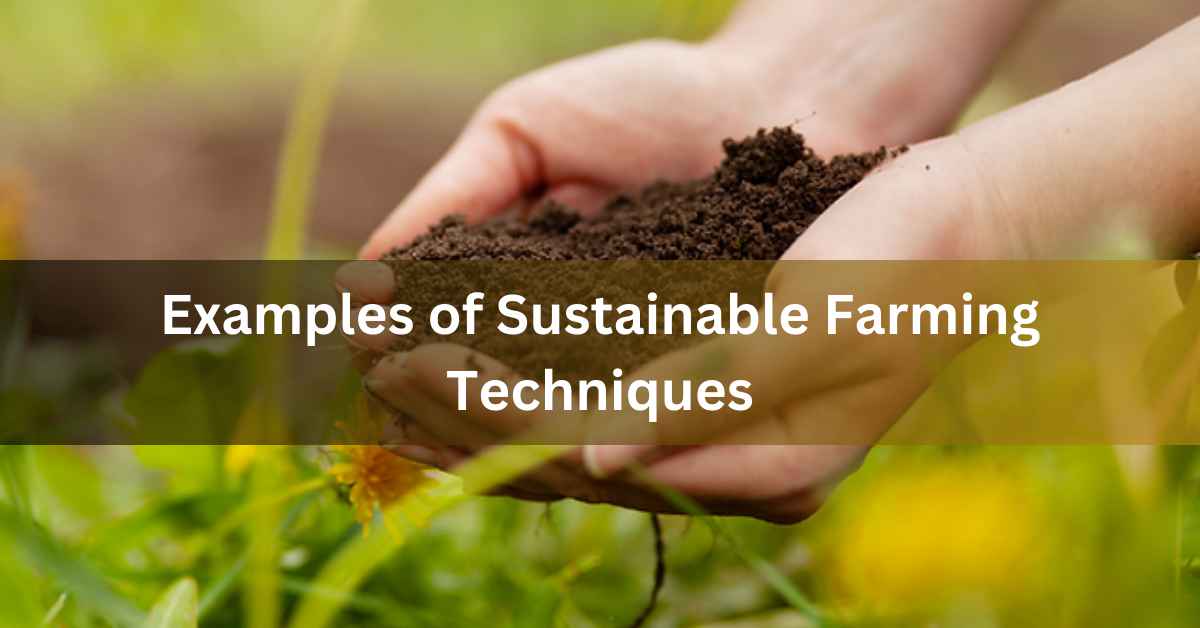7 Examples of Sustainable Farming Techniques
Sustainable farming affects crop production and helps future generations continue to do the same. It encourages minimal chemicals, non-renewable energy, and soil replenishment to increase farm yields.
Sustainable agriculture and farming can promote biodiversity and conserve native ecological environments. Here are some examples of sustainable farming techniques:
Permaculture
Depending on the design technique, permaculture applies nature’s principles to a productive agricultural ecosystem. It can combine plants, animals, and landscapes to generate a life-supporting system in urban and rural areas. The method can be used in energy systems, housing, and farming.
It can allow growers or farmers to produce food while minimizing wastage. Permaculture techniques can utilize perennial crops and other plants to improve a space’s functionality. It can help rehabilitate degraded natural systems to stable conditions.
Biodynamic Farming
This sustainable farming technique encourages farmers to manage the farm holistically. Farmers have the option to use organic, locally available resources for fertilizing.
The method involves using the farm as a closed, diversified ecosystem. Livestock farming helps complement plant farming and soil. The animals’ manure can boost soil fertility, which can help foster crop yields.
Crop Rotation
Crop rotation involves farming different crops in different seasons in the same location. The rotation encourages new plants to redeposit nutrients.
A farmer can plant beans on land after a corn season to rejuvenate the soil’s nitrogen. This farming technique can also help control pests. Growing a different crop each season can suppress pests attracted to specific crops.
Natural Pest Management
Sustainable agriculture techniques may minimize the use of inorganic pesticides and chemicals to control pests and pathogens. Natural pest management may involve culture control and biological, mechanical, and physical control practices.
Culture control consists of avoiding or decreasing pests, weeds, and diseases. It also encourages roguing, which helps remove dead and infected plants.
Biological control practices use other organisms to manage pests. Mechanical and physical controls may utilize tools and objects to manage pests. Such means may include screens, fences, mulches, and traps.
Polycultures
Polyculture is farming different crop species, like non-legumes (strawberries) and legumes, on the same land simultaneously. The technique tries to copy the biodiversity in a natural ecosystem. Polycultures can help reduce diseases, pests, and weeds. It can encourage plant competition and allow crops to grow stronger.
Mulching and Manual Weed Control
Farmers can use ground covers to minimize weed growth and maintain soil moisture. Farmers may not need herbicides when managing certain weeds.
They can manually uproot weeds, eliminating the use of chemicals. Farmers can use organic mulching materials like grass or wood chips to boost soil moisture and nutrient preservation. That can foster microorganism activities that may aerate and enrich the soil.
Conservation Tillage Farming
Conservation tillage farming practices try to use crop residue to prevent or minimize soil erosion by water. Farmers cover the soil surface with an extra layer of topsoil to help reduce runoff. Some conversation tillage practices may include no-till, strip-till, or in-row subsoiling.
No-till practices allow the soil to remain unbroken; some farmers will let it sit for up to a year. Other farmers leave crop residue on the soil surface to allow it to rejuvenate. Strip-tilling or zone tillage involves tilling land where crops are planted, and farmers might cover the space between rows with residue.
it may boost the seedbed environment and allow the soil to rejuvenate. In-row subsoiling may use deep tillage to dig dirt below the surface of strips.
Embrace Sustainable Farming Today
Sustainable farming can enhance food security and safety. It can encourage farming with numerous economic and environmental benefits. Farmers can utilize mulching, polyculture, biodynamic farming, or conversation tillage to grow crops like strawberries. Embrace sustainable agriculture and consume foods tilled sustainably.

